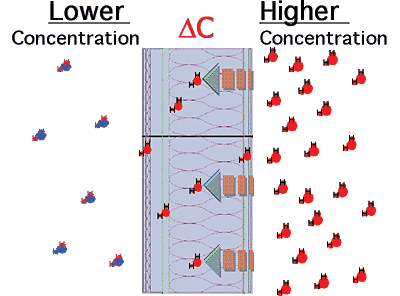Moisture Management in Wall Assemblies: Air, Water, and Vapor Barriers
Air Barrier Assemblies
The standard specification, ASTM E1677, requires that air infiltration rates for air barrier assemblies must not exceed 0.06 cfm/sq. ft. at 0.30 inch water pressure differential. These assembly requirements were adopted by the Wisconsin energy code in 2003. ASTM E 2357 is a new test method which was approved in 2006 and can be used as an alternative test method for air barrier assemblies
Whole Building Airtightness
There are no accepted criteria for what constitutes an airtight building. A study by the National Institute of Standards and Technology (NIST) entitled, "Investigation of the Impact of Commercial Building Envelope Airtightness on HVAC Energy Use," summarizes envelope airtightness of 166 buildings, 144 in North America and 22 in the U.K. The air leakage rates measured by various standard methods and normalized by area of the above-ground portion of the building envelope were found to vary over a broad range, from less than 0.5 to 2.7 cfm/sq. ft. at 0.30 inch water. No trends towards increased airtightness in more recent buildings were found.
The impact of building envelope airtightness on building performance is generally recognized. However, while existing codes require sealing of the building enclosure, there is no quantifiable measure for an acceptable air-tightness of the opaque building envelope, unlike windows, which require some measure of airtightness for compliance.
An excerpt from the International Code Council (ICC) requirements for building envelope sealing is as follows:
502.4.3 Sealing of the building envelope. Openings and penetrations in the building envelope shall be sealed with caulking materials or closed with gasketing systems compatible with the construction materials and location. Joints and seams shall be sealed in the same manner or taped or covered with a moisture vapor-permeable wrapping material.
It should be noted that the code specifies the use of a moisture vapor-permeable wrapping material, as opposed to a vapor non-permeable material, or vapor barrier, which could interfere with condensation control strategies.
The code description on the sealing of the building envelope provides no guidelines on the recommended airtightness, and has been compared to requiring that care be taken when installing insulation without specifying a minimum R-value. Some states and code organizations have adopted compliance criteria for airtightness of materials or assemblies airtightness, including the National Building Code of Canada (NBCC) (1995), Massachusetts (2001), Wisconsin (2003), and Minnesota (2007). In 2006, ASHRAE approved an amendment to the ASHRAE 90.1 model energy code that would require air barriers for most commercial buildings, and provide three quantifiable compliance options: air barrier materials, not to exceed 0.004 cfm/sq. ft. at 0.30 inch water; air barrier assemblies, not to exceed 0.04 cfm/sq. ft. at 0.30 inch water; and whole building, not to exceed 0.4 cfm/sq. ft. at 0.30 inch water.
Vapor diffusion is the second water vapor transport mechanism through the building enclosure, in addition to air-transported moisture. Vapor diffusion is the movement of water vapor molecules through vapor permeable materials, from regions of higher vapor pressure to lower vapor pressure, or higher vapor concentration to lower vapor concentration.
The rate of water vapor diffusion depends on vapor pressure difference, or concentration difference, across the material or assembly, as well as the water vapor permeance, which is expressed in perms. Based on water vapor permeability, materials are classified as vapor permeable or vapor non-permeable.
Water vapor diffusion is the transport of water vapor molecules through vapor permeable materials |
 |
Vapor permeable materials allow vapor diffusion. Vapor permeability can vary over a wide range. The higher the perm rating, the more permeable the materials. According to the 2006 International Building Code (IBC), materials must have a minimum of five perms to be considered vapor permeable.
Vapor non-permeable materials do not allow vapor diffusion. These materials are called vapor barriers or vapor retarders. According to the 2006 IBC, materials with vapor permeability of 1.0 perm or less are vapor barriers.









